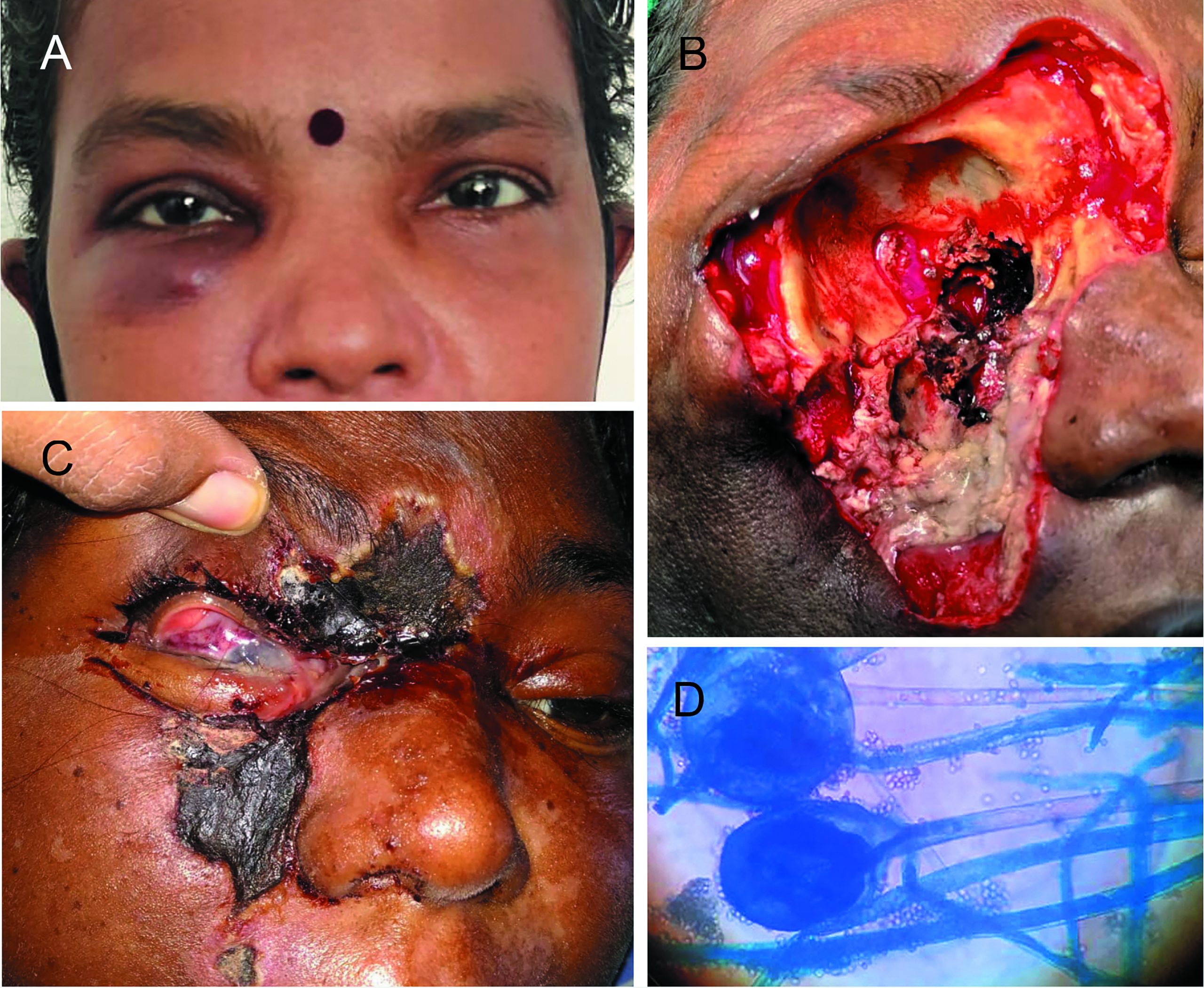A second COVID-19 wave of unprecedented ferocity in India brought back COVID-related morbidity and mortality, lockdowns, and economic slowdown. Ophthalmology has gone back to emergency-only practice with a sudden cessation of the increased number of elective surgeries that were just beginning to happen.
The second wave also brought a new fear of a different type—mucormycosis (colloquially called “Black Fungus”), an angio-invasive, potentially lethal fungal infection. Much like the history of COVID and the Chinese ophthalmologist, Li Wenliang, health authorities realised cases of mucormycosis were surging following informal chats between ophthalmologists and ENT surgeons. Cases had increased from a few cases per year to, unexpectedly, many cases a month.
Mucor is a ubiquitous saprophytic fungus seen rarely in the past, mostly in uncontrolled diabetics, immunosuppressed, and post road accidents. There has been an explosion of COVID-associated mucormycosis (CAM) in India with close to 12,000 cases being reported over a period of few months creating an epidemic within a pandemic. The first wave showed a 2.1-fold increase in prevalence. Current predictions during the second wave stand at a 50-fold increase.
Causes include uncontrolled diabetes, new onset COVID related diabetes, immunosuppressed state, excessive use of steroids, and other immunosuppressives such as tocilizumab as part of COVID therapy, altered iron metabolism in COVID-19 causing a hyperferritinemic state, and probably new COVID variants. The panic created by mucor caused other factors to also be proposed, rightly or wrongly, but without clear evidence-contamination of nasal oxygen, humidifiers, and tubes; exposure to soil and organic matter, and increased consumption of prophylactic zinc.
The common presentation, rhino-orbito-cerebral mucormycosis progresses rapidly from nose to sinuses, orbit, and finally intra-cranially. Increased suspicion, early diagnosis, and aggressive treatment are a must to avoid fatal consequences. Two recent meta-analysis on CAM from India showed between 39–49% mortality. Warning symptoms include nasal stuffiness, black or blood-tinged discharge, black crusting in nostrils, foul smell that progress on to eschars, facial oedema, numbness, pain, fever, and malaise.
Orbital invasion presents with pain, ptosis, proptosis, diplopia, restricted ocular motility, loss of vision, artery and vein occlusions, and V1, V2, IIIrd, IVth, and VIth nerve palsies indicating superior orbital fissure/orbital apex involvement. In the final stages, cribriform plate and/or cavernous sinus involvement progresses on to the skull base and diffuse/ multifocal CNS involvement.
Microbiological diagnosis from deep nasal swabs and nasal or orbital biopsy and contrast enhanced MRI/CT help in diagnosis. Management is multi-disciplinary involving the ophthalmologist, ENT surgeon, neurosurgeon, neurologist, infectious disease specialist, intensive care specialist, diabetologist, microbiologist, Medical management is with systemic liposomal amphotericin-B, in the shortage of which, less expensive but also less effective and more toxic forms such as amphotericin-B deoxycholate and amphotericin-B lipid complex may be considered acceptable under close monitoring in patients with good renal function. Prolonged treatment for even up to six months is required.
Surgical management includes aggressive debridement until clean margins of paranasal sinuses. If required, surgical management can also include turbinectomy, palatal, and orbital medial wall resection with local amphotericin-B and orbital exenteration for advanced disease. Only supportive treatment may be possible with advanced CNS disease.
Prophylaxis includes avoiding risk factors, well controlled blood sugar, judicious usage of steroids as per well-defined protocols, close monitoring, and mask usage especially in areas with potential high contamination (such as construction sites). With fungal infections on the rise, COVID-associated Aspergillosis and Candidiasis should also not be forgotten.
Legend for figure: A-C: Rapid progression of CAM requiring extensive sinus and orbital surgery; D: Microbiological study showing Mucor on LPCB mount (Image courtesy Dr. Rita Hepsi Rani, MS, DNB, Tamil Nadu, India).
Dr Soosan Jacob is director and chief of Dr Agarwal's Refractive and Cornea Foundation at Dr. Agarwal's Eye Hospital, Chennai, India and, can be reached at dr_soosanj@hotmail.com.


